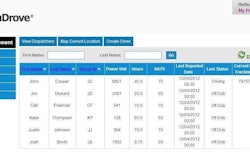Motorola Solutions, a provider of mission-critical communication systems and services, announced results of a research study that details shifts in the plans of warehouse professionals across several industries. As a result of these changes, the role of technology in warehouses has shifted from purely reducing costs and has increasingly expanded into adjacent benefits that can drive differentiation and profitable growth for their businesses.
The Motorola Solutions Future of Warehousing Survey polled warehouse IT and operations professionals in the manufacturing, retail, wholesale and third-party logistics (3PL) markets on the state of warehousing today and their vision for warehousing and distribution in the future.
Some of the key findings are:
Shifting perception of warehouses coincides with increased supply chain investments
- More than one-quarter (26 percent) of respondents reported that company management views warehouses and distribution centers as an asset that can drive growth for the business.
- By 2018, more than one-third of respondents (35 percent) plan to increase the number of warehouses and distribution centers they operate, representing a 71 percent increase from current expansion plans in action today.
Technology investment plans change as workflow requirements evolve
- During the next five years, approximately two-thirds (66 percent) of respondents plan to increasingly automate processes by equipping staff with new technology.
- As the industry moves to reduce order fulfillment costs and increase worker efficiency and productivity, the picking and replenishment solutions of the next five years will shift more toward multi-modal operation, with a 142 percent increase in the integration of voice-directed and screen-directed picking on flexible mobile devices.
- Warehouse professionals expect a significant shift away from pen and paper-based processes (71 percent decrease) to handheld mobile computers and tablets (100 percent increase) for cycle counting and inventory validation by 2018.
Supply chain optimization initiatives focus on external compliance and internal agility
- Nearly two-thirds (67 percent) of respondents claimed that they are either constantly or annually re-evaluating their supply chain networks.
- Only 67 percent of items received at a warehouse are bar coded today. Respondents expect supplier management initiatives and trading partner compliance requirements to drive higher utilization in the coming years – reaching an estimated 84 percent by 2018.










